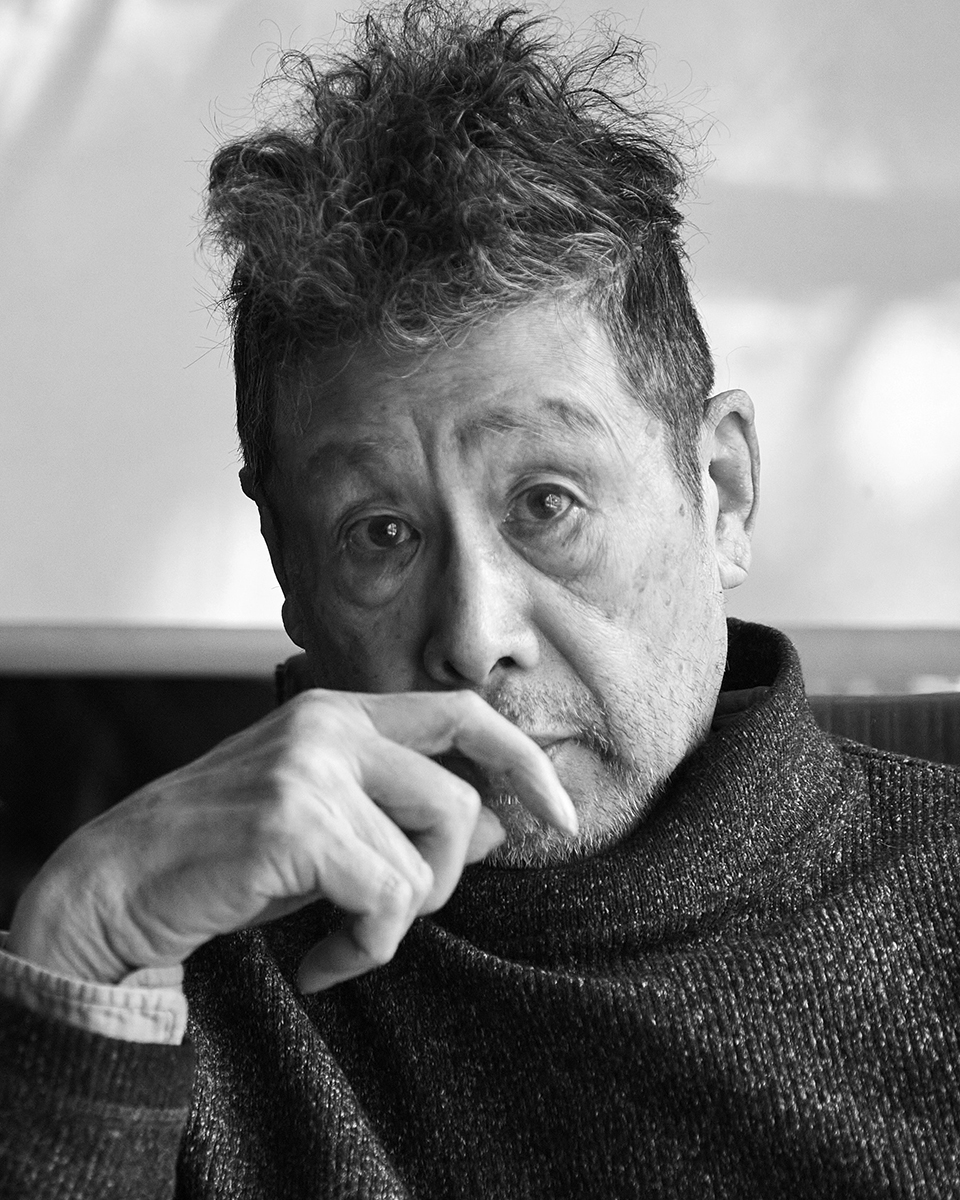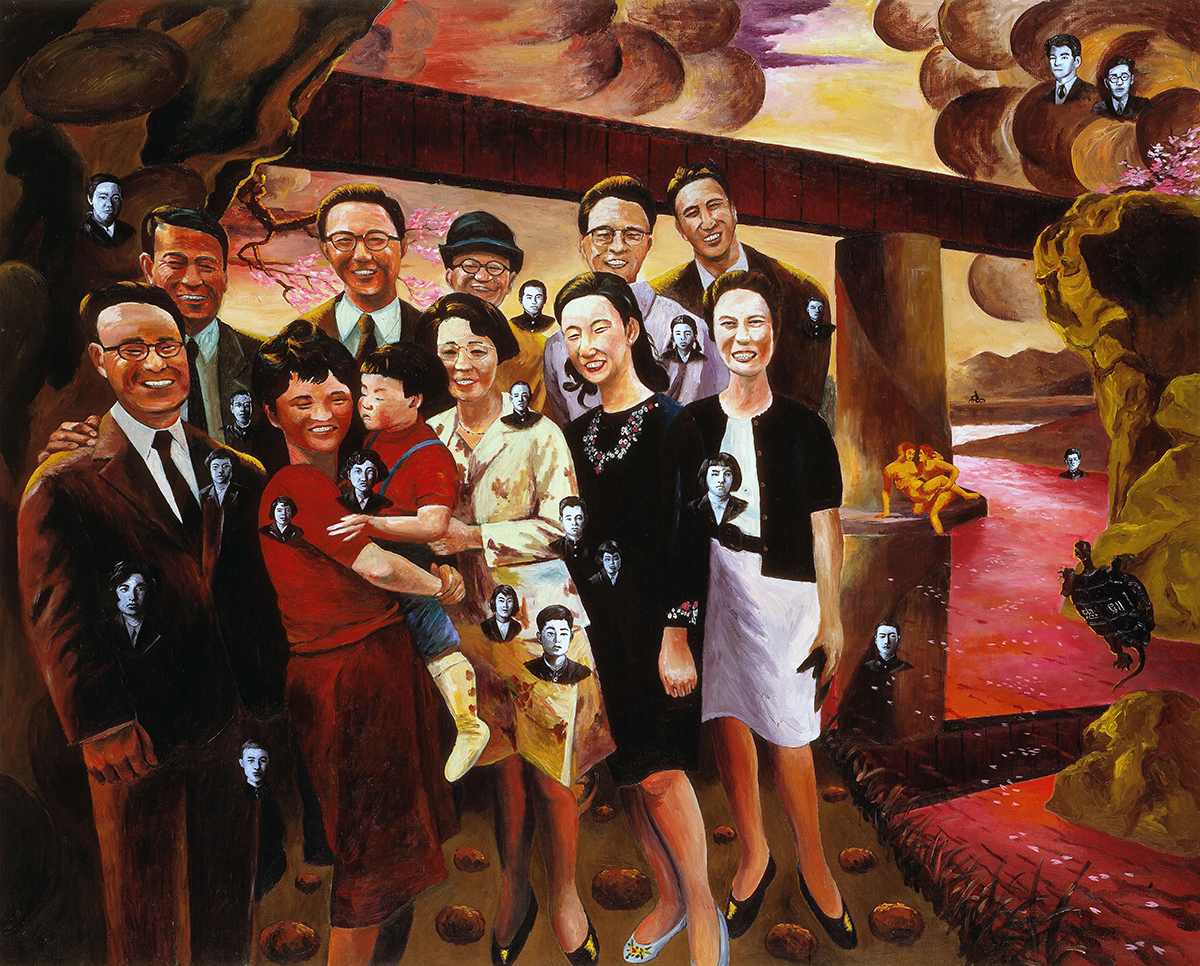TADANORI YOKOO: RIVER OF RENGA
HAPPENINGText: Alma Reyes
Among the celebrated and internationally acclaimed Japanese contemporary artists living today, perhaps, Tadanori Yokoo stands the most mystifying and extraordinary, who continues to be guided spontaneously by his brushstrokes without intention or anticipated thought. His drive arises from what his body, mind and physical condition feels at the exact moment of time. Cradling an abundant vessel of awards and recognitions, from twenty-nine years old (1965) when he received the Mainichi Industrial Design Award, to the Grand Prize for Prints at the 6th Paris Youth Biennale (1969), UNESCO Award of the 4th International Poster Biennale in Warsaw (1972), Gold Prize of New York ADC Award (1997), Purple Ribbon Medal (2001), 27th Praemium Imperiale Awards In Honor of Prince Takamatsu (2015), Honorary Citizen of Tokyo in 2020, and many more,Yokoo, at 88 years old, is undeniably an unprecedented national treasure. The number of solo and group exhibitions around the world is equally stupefying.
Moreover, Yokoo is completely autodidactic who, minus formal art school education, developed his own unique direction by self-training, experimentation, and incessant exploration of multifarious media, themes, imagery, and influences that make him one of the most exciting creators of his generation.

Portrait of Tadanori Yokoo, Photo: Kazunari Tajima
Running until June 22nd, Setagaya Art Museum presents “Tadanori Yokoo: River of Renga,” a curious exposé of sixty-four new works that begins from a picture of a reunion with friends and evolves into a series of diverse images that emerge and submerge, like a flowing river deluged by life and death.
Renga is a form of Japanese poetry that involves several people sharing the upper and lower verses of a waka poem and reciting them to each other. In the spring of 2023, Yokoo started to quietly ponder on his gradual physical decline while gazing at a large canvas. He felt as though he could perceive his works from the past, but they seemed to have been completed by someone else, and allowed his hand to sway the strokes at that present moment as they are relinquished to his future self. For Yokoo, the “renga” process streams like a river, traversing the “linked paintings” from one stage to the next.
He explained, “In my case I’m making paintings, so first I produce one painting. Then I wait for an image associated with that first painting to come up, and make the second painting. I would keep that process going for three, four paintings or more, and the end I had made sixty-four. Whereas multiple people might contribute one poem after another in a kind of word-chain game, I’ve been making a chain of my own paintings by myself. That’s why I call them renga.” – The River of Renga Flows into the Sea of Rebirth: An Interview with Tadanori Yokoo, Interviewer/Editor: Miki Tsukada (Curator, Setagaya Art Museum)

Tadanori Yokoo, A Requiem of Memory, 1994, Yokoo Tadanori Museum of Contemporary Art
The works are arranged by date of creation to capture the “river” current in Yokoo’s creative mind. The series starts with the painting A Requiem of Memory (1994), taken from the exact photograph shot in 1970 by Kishin Shinoyama. The picture shows Yokoo with his classmates under a bridge by a river in his hometown in Nishiwaki, Hyogo Prefecture. After twenty-two years, the photograph was published in the artist’s biographical photo book “Tadanori Yokoo: Retrospective Scenography” with an introduction by writer Yukio Mishima. Yokoo then, amplified the precise theme — a group of people and an iron bridge — and restructured it with additional elements, like a raft, arch, train, or modified figures in the succeeding works.
Yokoo explained about the series, “I think you’ll notice that as the series progresses, the classmates standing under the bridge begin to scatter, or transform into new characters, moving around as they please. My Nishiwaki classmates at some point become Duchamp, or Man Ray, or Mexicans for some reason, or Tahitian women from a Gauguin painting. These changes mystify even me, the painter. They behave entirely of their own volition, morphing at will. Even I can’t stop them. Now it occurs to me that these sixty-four paintings are a single work. In that sense I guess you could call this a kind of temporal art.” – The River of Renga Flows into the Sea of Rebirth: An Interview with Tadanori Yokoo, Interviewer/Editor: Miki Tsukada (Curator, Setagaya Art Museum)
Read more ...




